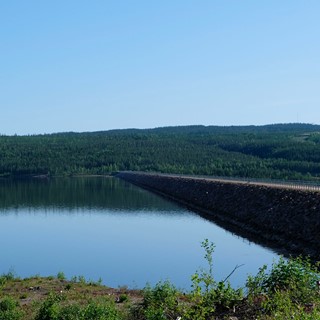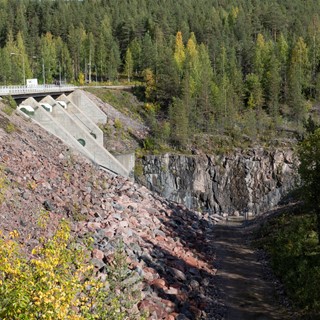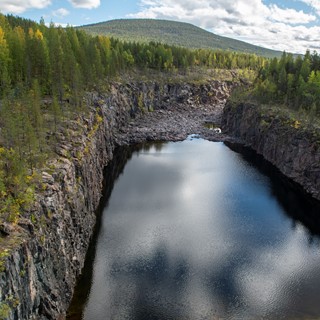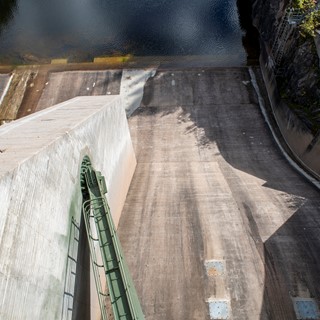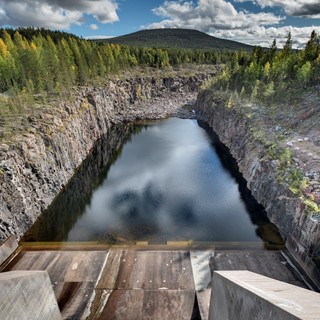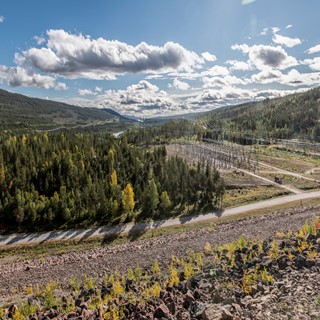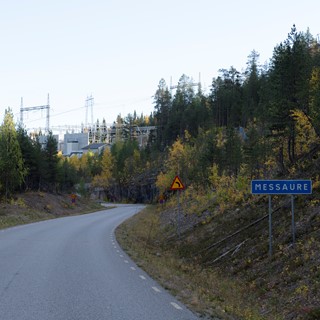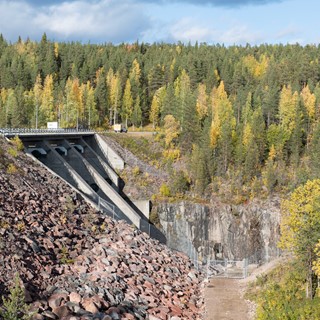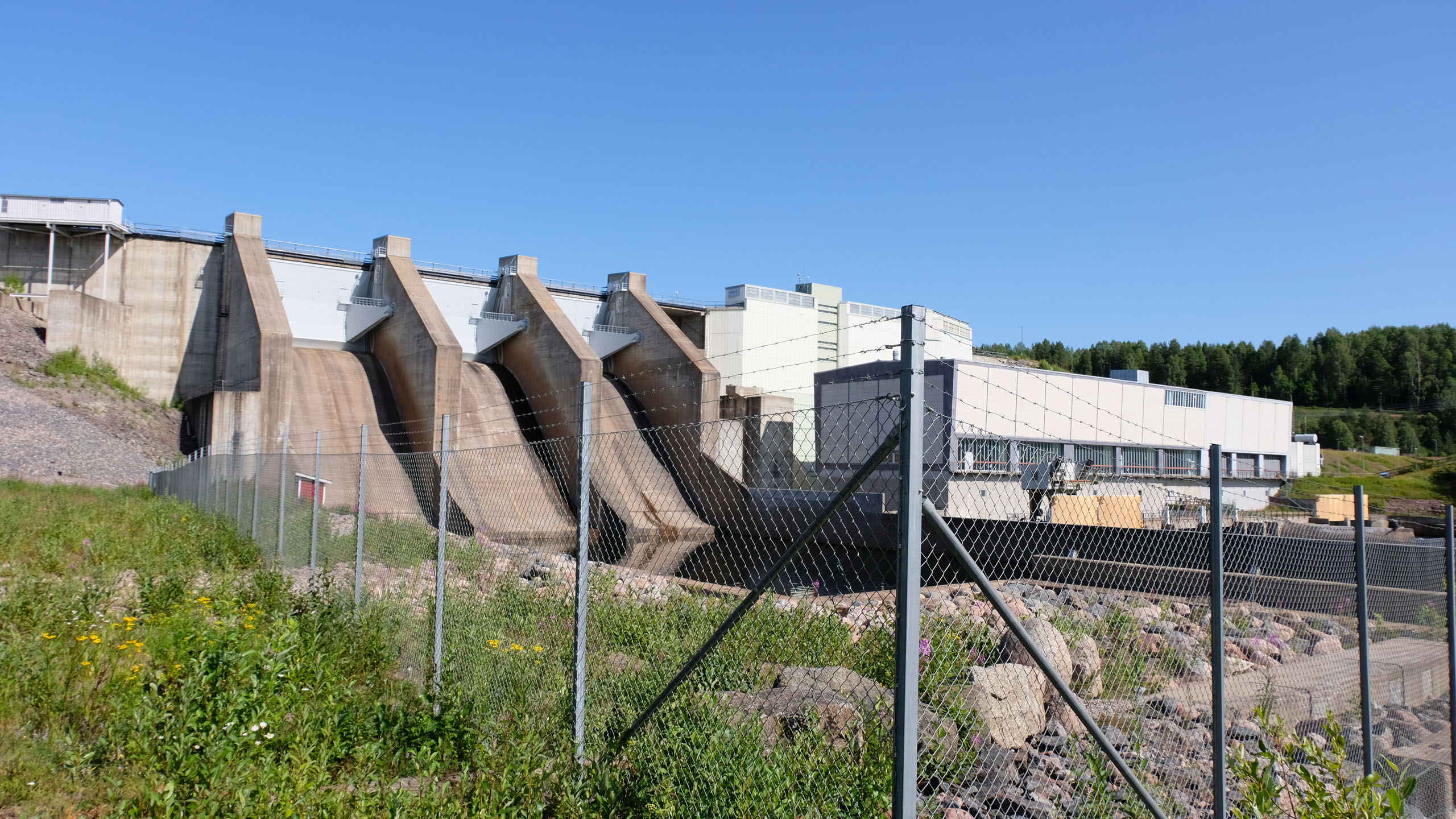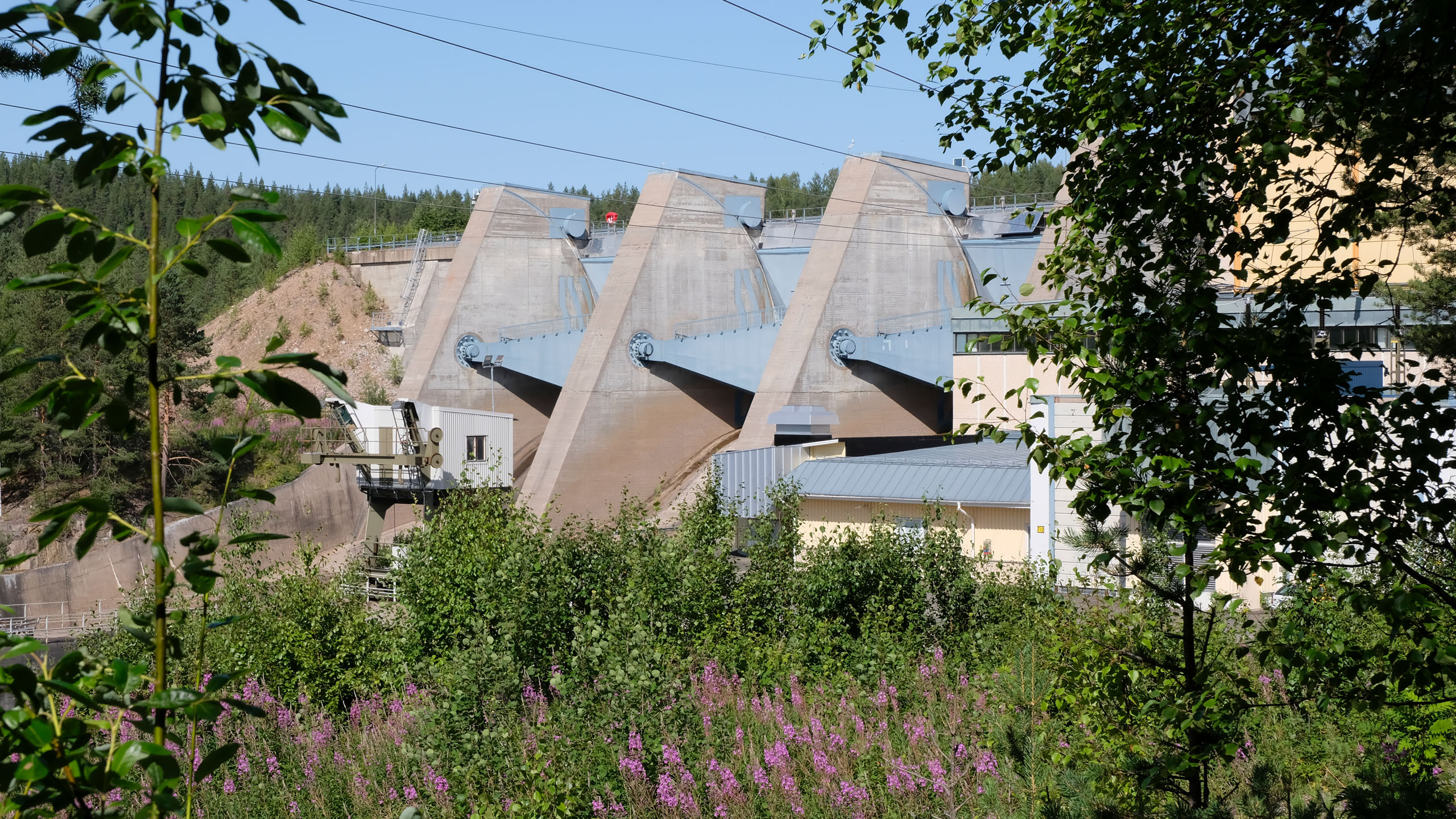History
The Greater Luleälven flows into a deeply cut valley riverbed at Messaure’s power plant. Before the dam at Messaure was built, the river ran from around 165 metres above sea level below Ligga’s power plant, to around 90 metres above sea level where the Messaure dam is now. Next to the river valley, flats rose, particularly characteristic on the east side of the river. The power plant is located within Muddus national park, which did not affect Vattenfall’s expansion opportunities. In 1956, an application was sent to his Royal Highness, requesting permission to flood part of the national park in connection with the construction of the power plant. The response to the board was that there were no obstacles for the Water Court to grant permission to impound the river.
Dam construction at Messaure was to be the biggest of Vattenfall’s construction projects, as the filler material used for the dam had a volume equivalent to four Cheops pyramids. The enormous amounts of material that were to be moved required plenty of labour and many vehicles. In 1960, 150 vehicles were working on dam construction, requiring a labour force of 270 drivers. The enormous fleet required maintenance, which occupied almost 60 workers. Considering the site’s northern location, efficient work was required during the summer to stop the material setting and shifting. The dam was completed in 1962, one year ahead of schedule. At the time, it was one of Europe’s biggest dams, and it is still Sweden’s biggest, with its two-kilometre long and 101-metre tall earth- and rockfill dam.
Two power generation units were installed at the power plant, with room for a third, which was added in the 1980s. At the same time, the machine room was extended to be able to house a fourth power generation unit. The existing drainage tunnel was also widened for increased production capacity. The power plant used a head of 87 metres, producing around 1820 GWh/year. The three power generation units have a joint output of 463 MWe.
At most, 1,350 people worked at the power plant construction site in Messaure. The number does not include cleaning, cooking and clearance staff. Almost the whole operation was run using piecework contracts. One group of workers that did get an hourly wage was the odd-job men, and office staff had a steady monthly wage. The rates varied between the workers, as a setter (now called a measurement technician) had an hourly wage of 5 SEK, while a woodworker could earn over 9 SEK per hour.
Power plants were often built in sparsely populated or unpopulated areas. Until 1960, it was common for power plant workers’ families to live with them in temporary villages that developed over the course of construction. When the facility was complete, the family moved on to the next facility. Messaure was the last Swedish village of this type. Villages like Messaure have basically disappeared, which is down to several reasons, such as cars, allowances and improved roads.
Messaure was called the last big village in the unpopulated wilderness. Later sites along the River Lule Älv would mainly house the workers, as their families normally lived in nearby towns. Construction sites like Ritsem and Seitevare saw the construction of service facilities to improve social standards, but not to the extent found at Messaure.
In connection with the completion of Messaure in 1972, Vattenfall called a meeting with the inhabitants of the town. At the meeting, it was found that many of the inhabitants wanted to stay in the temporary village that had sprung up, since they liked it there. Despite the inhabitants’ request, the village was completely dismantled. This was motivated by great social shortcomings and problems concerning unacceptable costs for running water and sewage. Newspaper articles tell the story that the inhabitants felt that Vattenfall forced them to move.
Construction at Messaure affected three Sami villages; Sirkas, Gällivare and Serri. The construction of the dam had many consequences for reindeer husbandry. The Serri Sami village used the soon-to-be dam area for pasture throughout most of the year, and the Sami also pointed out that the low compensation for lost reindeer pasture was not acceptable. The natural currents above Messaure also constituted a natural barrier that stopped reindeer from moving to other pastures in the winter. As the rivers disappeared, the Sami would have to do more monitoring work. In addition to the effect on reindeer pastures, fishing, which was mostly done by Serri Sami village, would also be negatively affected.
Images
All pictures below are part of the power plant's history. All images are copyrighted. You may use the images for personal use but the images may not be used in commercial contexts or printed matter without our permission. Click on the pictures to enlarge them.
Stories
Here you can read other people's stories about the power plant. And if you have your own story, please share it. Whether you want it to be published on the site or not, we are interested in all stories.
Do you have a story about the powerplant or life around the river?
Send us your story
Visitor information
Below you can read about everything you need to know before a possible visit to the power plant. When it is best to visit the power plant, how to find here and about the rules that apply in the area.

